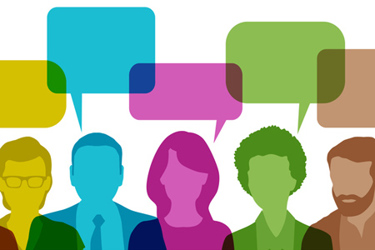Risk And Supply Chain Continuity Management: Biologics Industry Perspectives
A conversation with Melinda McCants, Andrew Goldman, and Sonia Schwantes, members of BioPhorum

We spoke to three long-standing members of BioPhorum’s Risk and Business Continuity Workstream about their companies’ approaches to risk management and what they learned from the pandemic. They are Melinda McCants, senior resiliency officer at Amgen; Andrew Goldman, head of business continuity and supply chain risk at Merck KGaA; and Sonia Schwantes, director of product management at New Age Industries.
How Did You Manage Risk And Business Continuity Before COVID-19?

Andrew Goldman explained his company also had a robust business continuity management program before the pandemic. “This is based on ISO 22301 and our plans might have a site or a product-family focus. For large sites, we look at risks across the end-to-end supply chain, from supplied materials and utilities downstream to our distribution and logistics network. We also do site-level disaster recovery and crisis management plans.
“We were generally well prepared for COVID-19,” Goldman added, “as our business continuity plans drove resiliency by addressing potential failure modes, e.g., a workforce strike, a disrupted market for a raw material, a weather event, etc. We launched our program in 2012, so it had some maturity by the time the pandemic hit. This helped us be somewhat prepared for COVID-19 but, of course, there were many surprises.”
Being “lean” and holding low stock levels is core to many companies’ business models, but there are positives for holding inventory. “We’ve always held stock, which helped us handle the explosion of business with COVID-19,” said Sonia Schwantes. “But in other ways, we still were quite reactive. Like many others, we didn’t always have a strong focus on our supply chain or a full understanding of outside factors that could impact our business. For example, the need for enough truck drivers to transport our products or people to unload containers from ships. It made us realize how much we needed to pay attention to these factors and how we should ‘red flag’ issues as they arise. So, if gas prices rise, trucks are more expensive to run, which might affect our transport availability and costs. This can have a domino effect.”
How Did You Manage During The Pandemic?
“While our site-level business continuity plans were strong, we didn’t have corporate-wide pandemic plans,” said Goldman. “We had assumed that a pandemic might only happen in one region, so if we had a disruption event at one site, we knew we could flip the switch and use our network. But activating plans across 70+ manufacturing and distribution sites often at the same time was a different matter, and we found some of our plans weren’t easily executable at the corporate level.”
However, Goldman suggested that what made a difference for Merck KGaA was that many of its mitigation actions in its business continuity plans built resiliency that it could use during COVID-19, such as increasing the inventories of higher-risk materials or purchasing more equipment to give it extra capacity.
“Capacity was a major challenge during COVID-19 because we’re a supplier to the vaccine market, so we had a surge in demand for our products,” said Goldman. “So, we had extra demand and an initial reduction in capacity caused by local outbreaks, social distancing restrictions, etc. We didn’t anticipate that all our sites worldwide would be susceptible to infection and our biggest challenge during the initial stages of the pandemic was that our plans considered these issues happening separately, not simultaneously. This is one of the problems with tabletop exercises, especially during a global pandemic, as there are so many variables. I would be amazed if any company had run a simulation with all the many variables that occurred.”
Schwantes explained that New Age Industries managed through the pandemic “with a lot of hard work, a little bit of panic, and more cooperation than we’ve ever needed before. COVID-19 was tough for us like everybody else because we couldn’t get enough people to handle the business, and everyone worked long hours to get as much product to the market as possible, all while knowing that we were having a huge impact on the quality of life for people as we were supplying companies working on vaccines. It was probably the most chaotic I’ve ever seen our industry.
“We sometimes had to do things manually,” Schwantes added, “because systems usually work well when everything’s flowing fine, but when there’s a major disruption, we have to intervene manually or else everything spirals out of control.”
At the start of the pandemic, McCants said, Amgen ran scenarios for China, Asia, and Australia, did some proactive ordering before the pandemic worsened, and increased its safety stocks from three to six months to six to 12 months before others began stockpiling. “We also researched when a vaccine would likely be produced, the materials that would be pulled into the program, and how this might affect us. Then we added details of any at-risk materials to our SAP/ERP systems to see our safety stock and plan accordingly.”
Suppliers and raw materials were a major topic of conversation for Goldman and Merck KGaA. “Our supply chain mapping exercises proved valuable because we could identify – especially in the early stages of the pandemic when it was seemingly isolated to China – which materials were coming from that region. Many people in the risk world talk about qualifying second suppliers or alternative materials being crucial; they are, but we found that strong relationships with our suppliers were most important. For example, when we knew an event was happening, we could ask them which materials were coming from affected regions and get honest responses that helped us secure materials early.”
Similarly, McCants described how, by collaborating more with its suppliers, Amgen could understand how they were impacted. “We asked them to complete weekly surveys to input into our COVID-19 tracker report on the materials potentially at risk. Once lockdown hit, we established monthly intelligence reporting and used Smartsheets to collate everything into a COVID-19 one-stop-shop for materials. At the same time, our global risk network held virtual weekly meetings with all our sites to understand how we were operating, potential supplier disruptions, etc.
“One of Amgen’s successful actions was using our relationships with key suppliers to prioritize orders and it improved our connections with secondary suppliers,” McCants added. “We all recognized we didn’t want to order excess materials as this wasn’t sustainable. So, we used ‘control towers’ to look across our company to see who needed materials and whether we had them elsewhere so they could be transferred. And if a supplier told us it was being impacted by rated orders or had limited capacity, we implemented centralized ordering to overcome site-based ordering.”
How Are You Doing Things Differently As A Result Of What You’ve Learned?
“The pandemic was a big learning experience for us as we were a fairly small company,” said Schwantes. “We learned we had to start conversations sooner, pass on knowledge much quicker, and think about the wider pandemic impacts. We still have more to do in terms of understanding our supply chain, but we’re putting more programs in place and being a lot more proactive about issues.”
Schwantes explained that New Age Industries is still feeling the fallout of panic buying as customers now have large stocks to use, so it must wait until they need replenishment. These peaks and troughs are sometimes hard to anticipate, especially if a company has never experienced them before. This kind of fluctuation was unthinkable for many before COVID-19.
“The long-term impact of COVID-19, the war in Ukraine, Chinese policies – we’re trying to figure out these issues and many more on a global level,” Schwantes said. “There are still problems with some supply chain areas and minor panic buying because of new issues that have come up. COVID-19 is leveling out, but we still have things like monkeypox that may not be as global but may still impact the supply chain. The pandemic brought the complex global nature of our industry home to us and many others.
“We’ve also learned to expect our customers to ask for different things,” Schwantes added. “For example, they want to know about second sourcing but don’t want the alternative to be in the US. Overseas customers may want the second source to be in their territory because they’ve seen U.S. government intervention to prioritize the home market over others.”
Amgen now sees risk very differently than before COVID-19, suggested McCants. “My boss always says, ‘Don’t let a good crisis go to waste,’ so we’ve leveraged the pandemic to improve our risk program. For example, we’ve tried hard to improve our indirect communication. Before COVID-19, we used emails and it was all ‘push’ communication. Now, we have a much better two-way communication process and use online tools such as a Smartsheet hub, which has become our team channel. If there’s an event that may impact us, we post a message on the channel and people can ask questions if they don’t see an answer.”
Originally, there was a lot of focus on the sub-tier visibility of our suppliers,” McCants added, “but COVID-19 showed us this isn’t that important for us — what’s more valuable is our relationships with our main suppliers and their relationships with their suppliers. So, while it’s helpful to understand some sub-tier information, it’s not worth the heavy investment. We also found that the reality for pharma is that we will always have a lot of single-source materials as it’s just not financially viable to have second sources because our volumes aren’t big enough.”
For Goldman, the variables they learned about in the pandemic will be incorporated into future crisis management planning and will feed into extra simulations. “We’re leveraging plans that go across sites, expanding our supply chain mapping activities, and gaining more understanding about what our suppliers are doing for crisis management. COVID-19 also has supercharged our reviews of our inventory levels.
“A big corporate strategy is to expand our capacity within our sites and use dual manufacturing locations across regions,” Goldman added. “So, we’ll build new plants on different continents to increase capacity and mitigate the risk of regional issues. We’re also improving our focus on safety measures. For example, we had to reactively figure out things such as shift overlaps and disinfecting during the pandemic, but these have now become part of our standard operating procedures. For distribution and logistics, we’re investigating areas like alternative transportation lanes.”
Moving From The Industry Of Today To The Industry Of Tomorrow With Risk And Supply Chain Continuity
“BioPhorum’s work in this area has been very important,” said McCants. “There’s been a real mindset shift.” She also stressed the importance of building relationships and sharing information.
“I’m sure BioPhorum’s guidance will become industry standards,” McCants added, referring to Risk Management In The Biologic Industry Supply Chain: A Best Practice Guide. “It gives you a platform to build on and lets you focus on key suppliers without asking them hundreds of questions. It says if you’re at point X, then do these actions; if you’re at point Y, do these. That’s very helpful for those just starting their programs, as some third-party tools sell you the world, and it’s easy to get overwhelmed. The BioPhorum best practice guides do a great good job of suggesting that you start small and build things up.”
“It has helped improve the open, two-way communications between customers and suppliers. It has helped our customers better understand our challenges and vice versa,” said Goldman. “I get a lot from the interaction with our customers and see their concerns and how they manage us as a supplier – and I then take those learnings back upstream to our suppliers. This helps me be a better partner with our suppliers and helps me ask them questions to better understand what they have in place for risk management and crisis management.”
From staff safety and site restrictions to transportation issues to material shortages, all companies found they were under huge pressure during the pandemic. But our industry is resilient and flexible — and is keen to update its approach to risk and business continuity management to mitigate future crisis scenarios.
